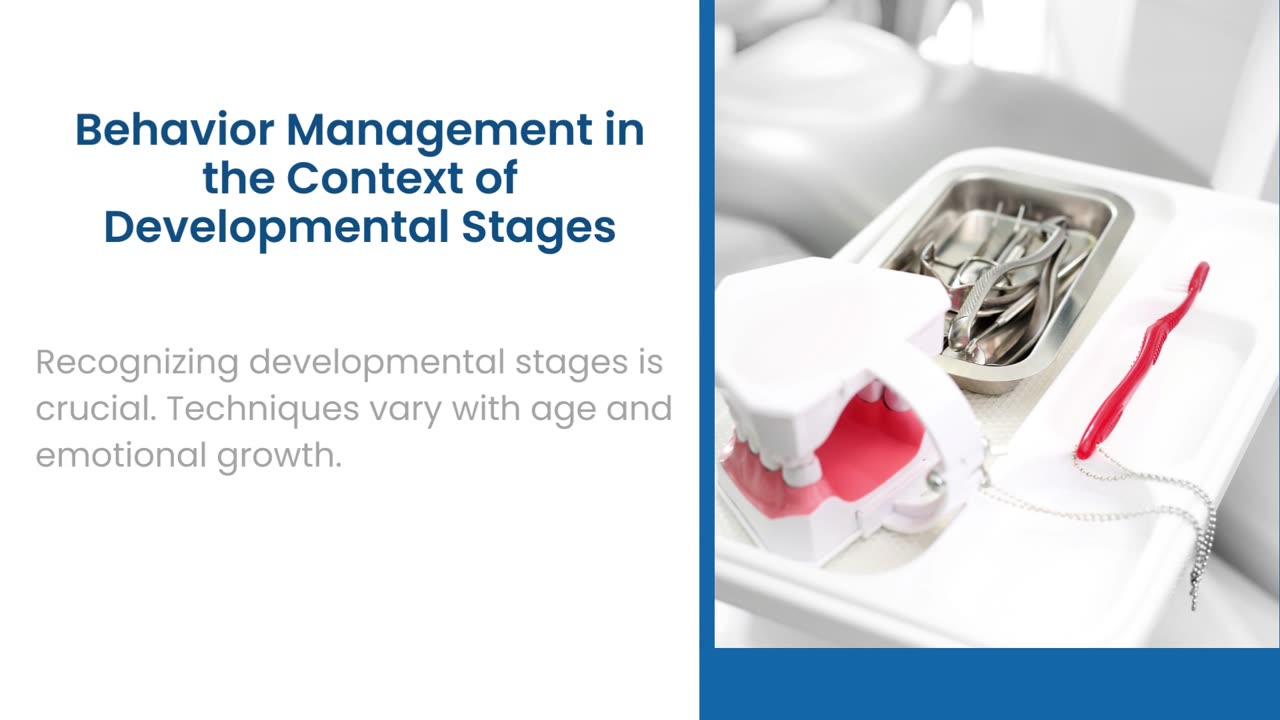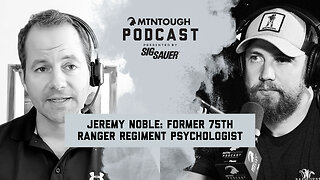Premium Only Content

Behavior Management Techniques
Successful pediatric dental visits hinge on understanding child behavior and psychology. Pediatric dentists know that children's emotions and thoughts shape their responses to dental procedures.
Fear, curiosity, and anxiety all play a role. That's why dentists tailor their behavior management techniques to each child's unique emotional landscape.
Tell-Show-Do Approach: Building Familiarity
The "Tell-Show-Do" approach is key. It starts by explaining the procedure in simple terms, then demonstrating it with non-threatening tools. Finally, the child receives treatment, understanding what's happening and feeling involved.
Positive Reinforcement: Nurturing Confidence
Positive reinforcement is another powerful tool. Praising and rewarding good behavior builds confidence and self-esteem.
Distraction Techniques: Redirecting Focus
Distraction is an art. Engaging stories or multimedia devices divert attention, making procedures feel shorter and more enjoyable.
Voice Control: Guiding Through Comfort
Voice control reassures anxious children. A calming voice guides them through the process, fostering trust and comfort.
Non-Invasive Techniques: A Gentle Touch
Non-invasive actions build trust. Counting teeth or examining a stuffed animal's teeth first creates familiarity and comfort.
Behavior Management in the Context of Developmental Stages
Recognizing developmental stages is crucial. Techniques vary with age and emotional growth.
Parental Involvement: A Collaborative Effort
Parents are partners. They comfort, reassure, and learn to communicate about dental care.
Visit - https://www.desertkidsdental.com/post/behavior-management-techniques-for-pediatric-dental-visits
For more insights, visit the link and discover the art of behavior management in pediatric dentistry. Nurturing comfort, smiles, and a lifetime of healthy oral care.
-
 1:32:42
1:32:42
Tucker Carlson
2 hours agoRFK Jr. Provides an Update on His Mission to End Skyrocketing Autism and Declassifying Kennedy Files
45.1K36 -
 DVR
DVR
Sean Unpaved
2 hours agoCode, Kill, Cash & Trades: Beasley Bets & NFL Trades
14K1 -
 1:06:29
1:06:29
MTNTOUGH Podcast w/ Dustin Diefenderfer
4 hours agoJeremy Noble: What Army Rangers Do Every Day to Build Unbreakable Mental Toughness | MTNPOD #122
4.96K -
 LIVE
LIVE
SternAmerican
1 day agoElection Integrity Call – Monday, June 30 at 2 PM EST | Hosted by Steve Stern & Raj Doraisamy
157 watching -
 1:04:25
1:04:25
Timcast
3 hours agoDemocrat Zohran Mamdani Calls For TAXING WHITE PEOPLE, Media Says HES NOT Communist
207K71 -
 LIVE
LIVE
Viss
2 hours ago🔴LIVE - Dominating The Battleground with Tactics! - PUBG
89 watching -
 1:04:27
1:04:27
Rebel News
2 hours agoPoilievre byelection called, Carney folds to Trump, Dr. Tam wins Order of Canada | Rebel Roundup
17K20 -
 LIVE
LIVE
StoneMountain64
1 hour agoPUBG maximum LOGIC + STRATEGY for the WIN
66 watching -
 DVR
DVR
Badlands Media
8 hours agoY-Chromes Ep. 39
24.3K3 -
 1:55:55
1:55:55
Steven Crowder
5 hours ago🔴 Shove the Blackpill up Your A$$: Trump's American Comeback is On!
352K202